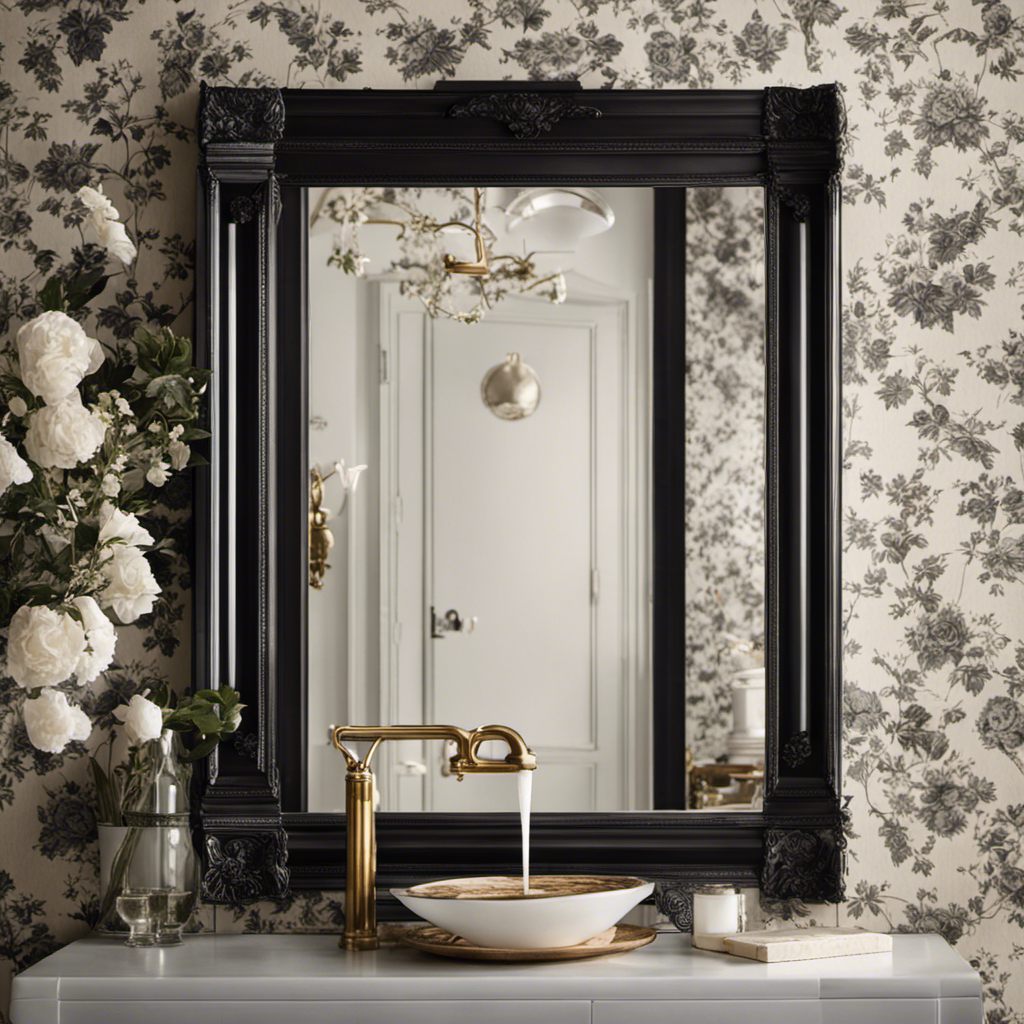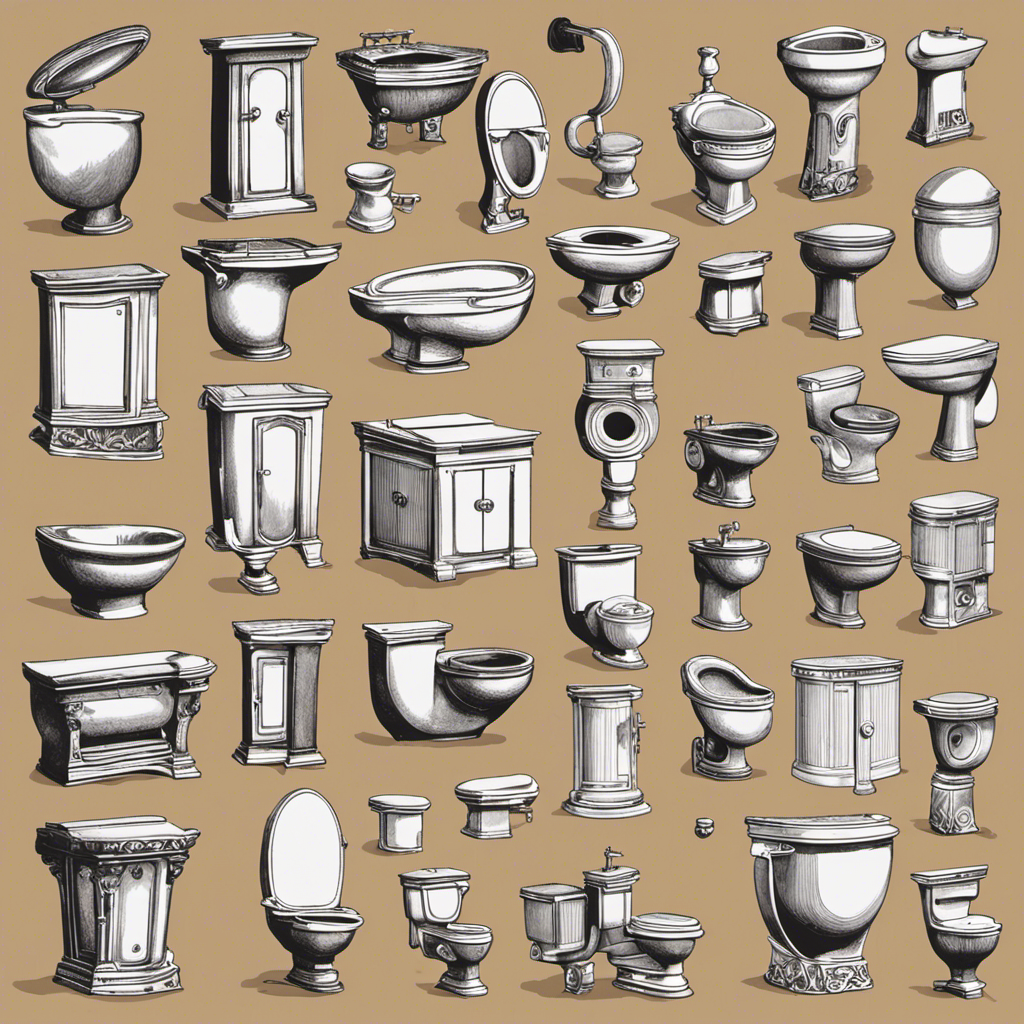I’ll never forget the day I ran out of toilet paper. It was a moment of panic and desperation, as I realized just how essential this humble invention truly is.
But have you ever wondered who came up with the brilliant idea of toilet paper in the first place? In this article, we will delve into the origins of toilet paper, explore its early forms, and uncover the inventors and innovations that shaped its evolution.
So, let’s take a journey through time and unravel the mystery of who exactly invented the beloved toilet paper.
Key Takeaways
- Toilet paper was invented in the 6th century and became widely available in the 19th century.
- Joseph Gayetty introduced commercially available toilet paper made from hemp and aloe vera in 1857.
- Seth Wheeler invented perforated toilet paper rolls in 1871.
- Toilet paper revolutionized bathroom hygiene practices and provided a more efficient and convenient way to maintain cleanliness.
The Origins of Toilet Paper
Toilet paper was invented in the 6th century, but it wasn’t until the 19th century that it became widely available.
The historical significance of toilet paper cannot be overstated. Before its invention, people used various materials such as leaves, moss, and even stones to clean themselves after using the toilet.
The introduction of toilet paper revolutionized sanitation practices and greatly improved personal hygiene. It became an essential item in households and public facilities, leading to a significant reduction in the spread of diseases.
From a cultural perspective, the availability of toilet paper also symbolized progress and modernity. It became a symbol of cleanliness and comfort, reflecting societal advancements.
Today, toilet paper is an integral part of our daily lives, and its invention and widespread availability have had a lasting impact on human health and well-being.
Early Forms of Bathroom Tissue
Before the widespread use of modern bathroom tissue, people relied on alternative materials for personal hygiene. Ancient alternatives included corn cobs, sponges, leaves, seashells, and water.
Corn cobs were rough and disposable materials commonly used in rural areas.
Sponges were soaked in water or vinegar, used, and then cleaned for reuse.
Soft leaves, such as large plantain or mullein leaves, were used for wiping.
Ancient Romans used smooth seashells to clean themselves after using the toilet.
In many cultures, water was used instead of wiping to achieve cleanliness.
These cultural practices varied across different regions and time periods, showcasing the resourcefulness of people in finding ways to maintain personal hygiene. However, these methods were not always effective or pleasant to use.
The advent of toilet paper, as we know it today, brought about a significant shift in bathroom hygiene practices.
With the need for more convenient and effective solutions, inventors and innovations in toilet paper emerged.
Inventors and Innovations in Toilet Paper
The creation of toilet paper brought about a significant shift in bathroom hygiene practices. Inventors’ contributions and toilet paper manufacturing advancements have played a crucial role in shaping the modern toilet paper we use today. One of the key inventors was Joseph Gayetty, who introduced the first commercially available toilet paper in the United States in 1857. This early form of toilet paper was made from hemp and contained aloe vera. Over time, advancements in manufacturing techniques led to the development of softer and more absorbent toilet paper. The invention of perforated toilet paper rolls by Seth Wheeler in 1871 further revolutionized the industry. Today, toilet paper is manufactured using various materials, such as recycled paper and bamboo, and comes in different textures and thicknesses to cater to individual preferences.
| Inventor | Contribution | Year |
|---|---|---|
| Joseph Gayetty | Introduced commercially available toilet paper made from hemp and aloe vera | 1857 |
| Seth Wheeler | Invented perforated toilet paper rolls | 1871 |
| Modern manufacturers | Develop softer and more absorbent toilet paper, using various materials and textures | Ongoing |
Toilet Paper in Modern History
In modern history, the availability and quality of toilet paper have greatly improved, making it an essential item in bathroom hygiene. As a result, toilet paper production has skyrocketed to meet the increasing demand.
Here are some key factors that have contributed to the rise in toilet paper popularity:
-
Softness and comfort: Today’s toilet paper is designed to be gentle on the skin, ensuring a comfortable experience.
-
Absorbency: High-quality toilet paper quickly absorbs moisture, providing effective cleaning and preventing unpleasant odors.
-
Varieties and options: Consumers now have a wide range of choices, including scented, colored, and textured toilet paper, catering to personal preferences.
-
Environmental considerations: Many manufacturers now offer eco-friendly options made from recycled materials, addressing growing concerns about sustainability.
-
Convenience and accessibility: Toilet paper is widely available in various sizes and packaging options, making it accessible to people worldwide.
Overall, the evolution of toilet paper production has met the rising demand for improved hygiene and convenience, ensuring that this essential item remains a staple in every bathroom.
The Impact and Evolution of Toilet Paper
Did you know that the impact and evolution of toilet paper have revolutionized bathroom hygiene?
Throughout history, hygiene practices have evolved significantly, and toilet paper has played a crucial role in this evolution. Before the invention of toilet paper, people used various materials like leaves, moss, or even their hands to clean themselves after using the bathroom.
However, the introduction of toilet paper brought about a significant shift in these practices. Not only did it provide a more efficient and convenient way to maintain cleanliness, but it also had a profound cultural significance. Toilet paper became a symbol of modernization and cleanliness, reflecting societal advancements.
Its widespread use has become an integral part of daily life, showcasing the continuous development and importance of hygiene practices in our society.
Conclusion
In conclusion, the invention and evolution of toilet paper have revolutionized the way we maintain hygiene in the bathroom. From its humble beginnings as ancient Chinese paper to the soft and absorbent rolls we use today, toilet paper has come a long way.
It has woven itself into the fabric of our daily lives, becoming an indispensable commodity. As the saying goes, ‘Toilet paper is the unsung hero that saves us from a messy situation.’ Its impact on modern history is undeniable, and its continuous innovation ensures that we have a comfortable and clean experience in the restroom.










